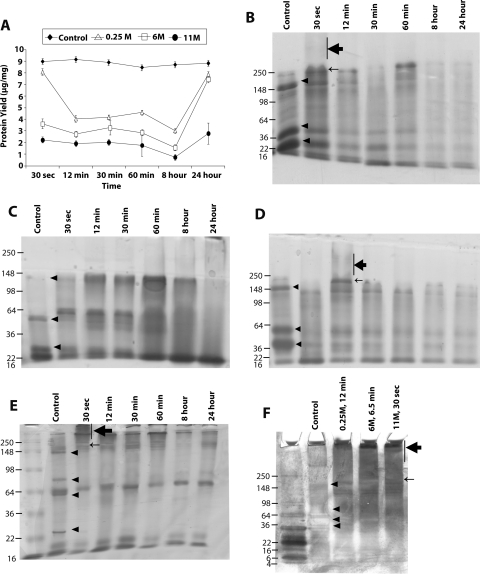Figure 2.
Representative bovine corneal normalized protein yield and profile after exposure to sodium hydroxide. (A) Representative protein yield (μg/mg) after exposure of cornea to distilled water (control) (♦), 0.25 M (▵), 6 M (□), and 11 M (●) concentrations of NaOH at the indicated time intervals. Recovered protein amounts estimated by Bradford's method were normalized to initial amount of wet tissue used. Results are the mean ± SD of three independent estimates. Results were significantly different from 0.0 by the one-sample t-test (*P < 0.05). (B–D) SDS-PAGE profile of total extracted protein after exposure to 11 M (B), 6 M (C), and 0.25 M (D) NaOH. An equal amount of protein (10 μg) for each predetermined time exposure, as indicated, was separated on 10% SDS-PAGE and subsequently stained with Coomassie blue. (E) Longer electrophoresis of the gel as in (B). (F) The control or sodium hydroxide–exposed proteins (10 μg) were loaded on a 4% to 20% gradient gel and subjected to electrophoresis for 3 hours and subsequently stained with silver staining. (E, F, lane 1) Molecular weight markers. Arrowheads: protein bands that decrease in intensity after NaOH exposure. Bar, thick arrow: smeared protein aggregates. Thin arrow: new protein band observed after NaOH exposure.

